Docetaxel-Loaded Disulfide Cross-Linked Nanoparticles Derived from Thiolated Sodium Alginate for Colon Cancer Drug Delivery
- PMID: 31906511
- PMCID: PMC7023491
- DOI: 10.3390/pharmaceutics12010038
Docetaxel-Loaded Disulfide Cross-Linked Nanoparticles Derived from Thiolated Sodium Alginate for Colon Cancer Drug Delivery
Abstract
In this study, fluorescein-labelled wheat germ agglutinin (fWGA)-conjugated disulfide cross-linked sodium alginate nanoparticles were developed to specifically target docetaxel (DTX) to colon cancer cells. Different amounts of 3-mercaptopropionic acid (MPA) were covalently attached to sodium alginate to form thiolated sodium alginate (MPA1-5). These polymers were then self-assembled and air-oxidised to form disulfide cross-linked nanoparticles (MP1-5) under sonication. DTX was successfully loaded into the resulting MP1-5 to form DTX-loaded nanoparticles (DMP1-5). DMP2 had the highest loading efficiency (17.8%), thus was chosen for fWGA surface conjugation to form fWGA-conjugated nanoparticles (fDMP2) with a conjugation efficiency of 14.1%. Transmission electron microscopy (TEM) and scanning electron microscopy (SEM) analyses showed spherical nanoparticles, and an in vitro drug release study recorded a cumulative drug release of 48.6%. Dynamic light scattering (DLS) analysis revealed a mean diameter (MD) of 289 nm with a polydispersity index (PDI) of 0.3 and a zeta potential of -2.2 mV for fDMP2. HT-29 human colon cancer cells treated with fDMP2 showed lower viability than that of L929 mouse fibroblast cells. These results indicate that fDMP2 was efficiently taken up by HT-29 cells (29.9%). Fluorescence and confocal imaging analyses also showed possible internalisation of nanoparticles by HT-29 cells. In conclusion, fDMP2 shows promise as a DTX carrier for colon cancer drug delivery.
Keywords: HT-29; disulfide cross-linked nanoparticles; docetaxel; thiolated sodium alginate; wheat germ agglutinin conjugation.
Conflict of interest statement
The authors declare no conflict of interest.
Figures


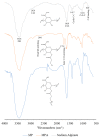
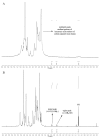

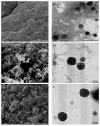
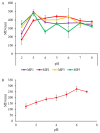
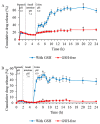
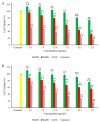
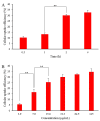


Similar articles
-
Wheat Germ Agglutinin-Conjugated Disulfide Cross-Linked Alginate Nanoparticles as a Docetaxel Carrier for Colon Cancer Therapy.Int J Nanomedicine. 2021 Apr 22;16:2995-3020. doi: 10.2147/IJN.S302238. eCollection 2021. Int J Nanomedicine. 2021. PMID: 33911862 Free PMC article.
-
Co-delivery of docetaxel and gemcitabine by anacardic acid modified self-assembled albumin nanoparticles for effective breast cancer management.Acta Biomater. 2018 Jun;73:424-436. doi: 10.1016/j.actbio.2018.03.057. Epub 2018 Apr 9. Acta Biomater. 2018. PMID: 29649635
-
Preparation, characterization, and in vitro drug release behavior of thiolated alginate nanoparticles loaded budesonide as a potential drug delivery system toward inflammatory bowel diseases.J Biomater Sci Polym Ed. 2020 Dec;31(18):2299-2317. doi: 10.1080/09205063.2020.1803034. Epub 2020 Sep 3. J Biomater Sci Polym Ed. 2020. PMID: 32727293
-
Biocompatible disulphide cross-linked sodium alginate derivative nanoparticles for oral colon-targeted drug delivery.Artif Cells Nanomed Biotechnol. 2019 Dec;47(1):353-369. doi: 10.1080/21691401.2018.1557672. Artif Cells Nanomed Biotechnol. 2019. PMID: 30691309
-
Preparation, characterization, and in vitro evaluation of docetaxel-loaded poly(lactic acid)-poly(ethylene glycol) nanoparticles for parenteral drug delivery.J Biomed Nanotechnol. 2010 Dec;6(6):675-82. doi: 10.1166/jbn.2010.1160. J Biomed Nanotechnol. 2010. PMID: 21361132
Cited by
-
K. ZHENG ET AL.Gold-nanoparticle-based multistage drug delivery system for antitumor therapy.Drug Deliv. 2022 Dec;29(1):3186-3196. doi: 10.1080/10717544.2022.2128469. Drug Deliv. 2022. PMID: 36226475 Free PMC article.
-
Natural Ingredient-Based Polymeric Nanoparticles for Cancer Treatment.Molecules. 2020 Aug 9;25(16):3620. doi: 10.3390/molecules25163620. Molecules. 2020. PMID: 32784890 Free PMC article. Review.
-
Alginate as a Promising Biopolymer in Drug Delivery and Wound Healing: A Review of the State-of-the-Art.Int J Mol Sci. 2022 Aug 12;23(16):9035. doi: 10.3390/ijms23169035. Int J Mol Sci. 2022. PMID: 36012297 Free PMC article. Review.
-
Targeting the Gut: A Systematic Review of Specific Drug Nanocarriers.Pharmaceutics. 2024 Mar 21;16(3):431. doi: 10.3390/pharmaceutics16030431. Pharmaceutics. 2024. PMID: 38543324 Free PMC article. Review.
-
2-Hydroxyoleic Acid as a Self-Assembly Inducer for Anti-Cancer Drug-Centered Nanoparticles.Pharmaceuticals (Basel). 2023 May 9;16(5):722. doi: 10.3390/ph16050722. Pharmaceuticals (Basel). 2023. PMID: 37242505 Free PMC article.
References
-
- Azizah A.M., Nor Saleha I.T., Noor Hashimah A., Asmah Z.A., Mastulu W. Malaysian National Cancer Registry Report 2007-2011. National Cancer Institute, Ministry of Health; Putrajaya, Malaysia: 2016. pp. 29–38.
Grants and funding
LinkOut - more resources
Full Text Sources

